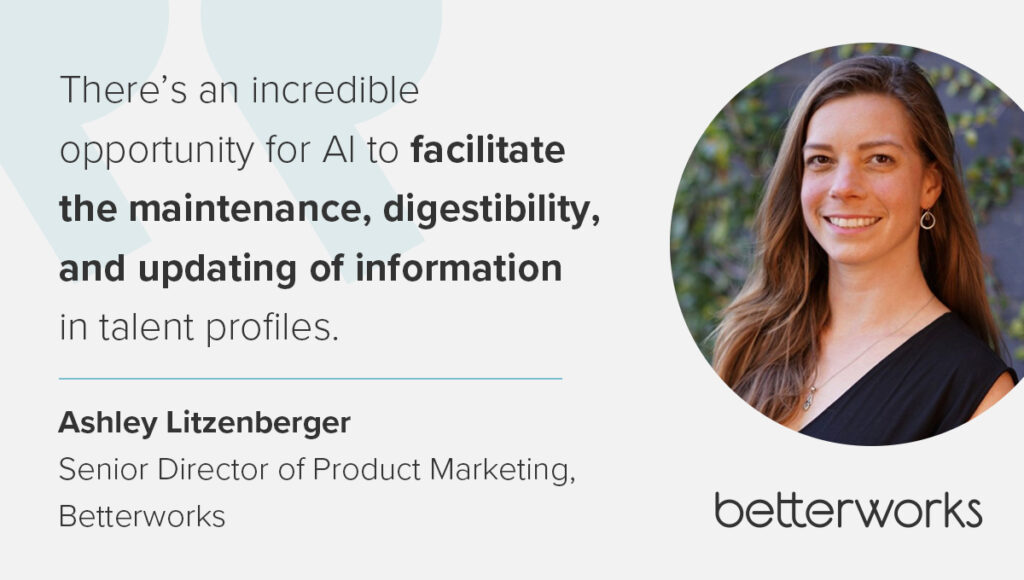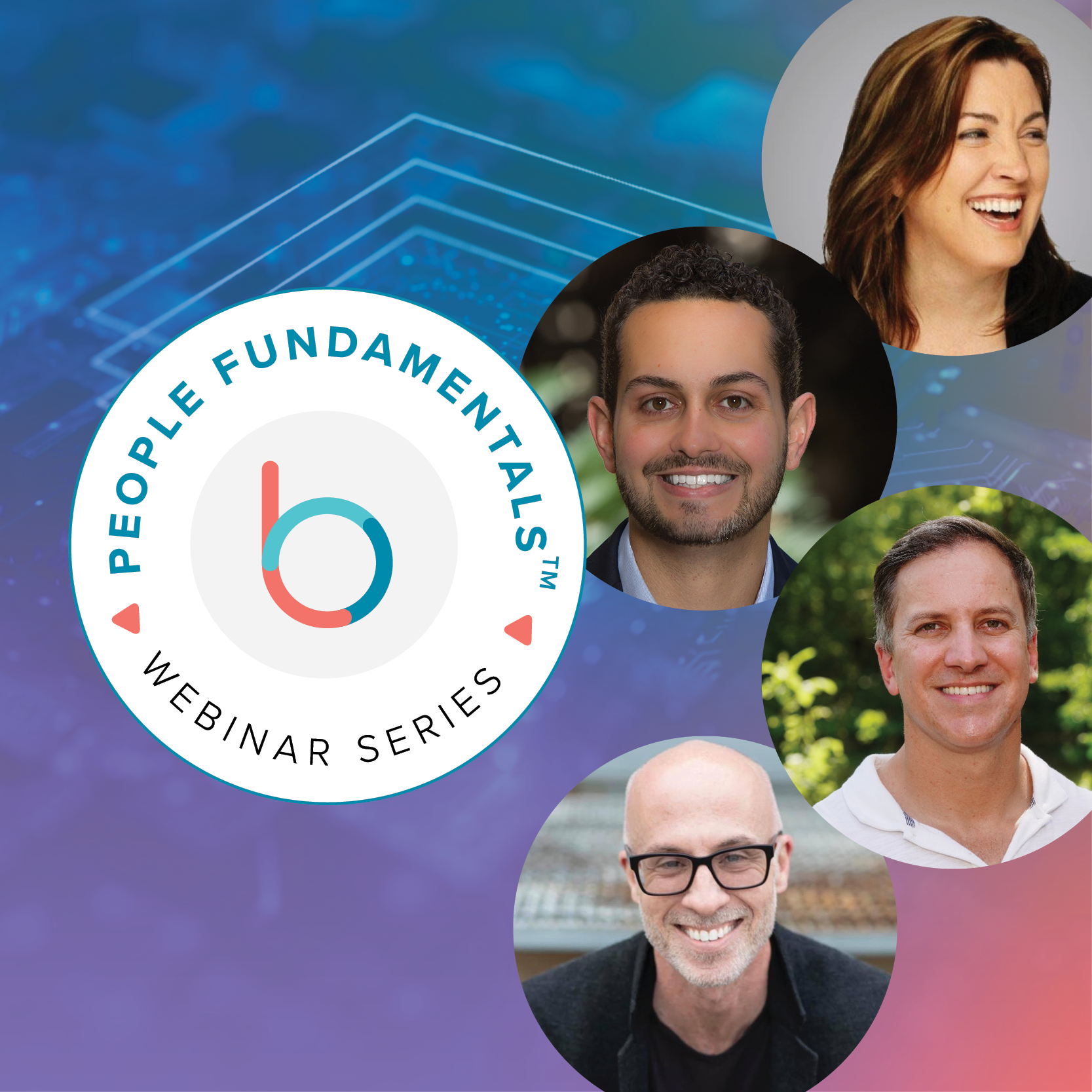Understanding what your workforce is capable of is essential for staying competitive. And today, HR leaders need more than the static snapshot provided by traditional talent profiles. They need real-time insights into evolving skills, career goals, and growth potential to drive forward-looking workforce planning.
Without this real-time understanding, organizations risk missing out on top talent and struggling to fill critical roles. According to Betterworks’ 2024 Skills Fitness report., nearly 8 in 10 companies have had to adjust hiring standards due to skills shortages.
To meet these challenges, we need a new kind of talent profile—one that evolves as fast as the world of work. Modern, dynamic talent profiles provide continuous, real-time views of each employee’s skills, achievements, and potential. Here’s how these talent profiles work and how they can transform your talent strategy.
What are talent profiles?
A talent profile, also known as an employee profile or professional profile, is a comprehensive summary that includes information like employee’s degrees and certifications, job titles, skills, accomplishments, and any assessment results to date.
Ashley Litzenberger, senior director of product marketing at Betterworks, likens these profiles to people’s public profiles on LinkedIn. “When we think about how we use LinkedIn to get to know people, it’s the same way that talent profiles are meant to be used within an organization.” The difference is that these organizational talent profiles generally focus on organization-specific data.
Modern talent profiles take this a step further, often adding information like verified skills based on, performance reviews, manager-employee conversations, feedback, and career development goals. This profile, visible to managers, employees, and HR, enables more informed decision-making on talent development and succession planning. It also serves as a source for manager-employee development conversations and action plans.
What makes a great employee talent profile?
A great talent profile is a dynamic resource that gives leaders an up-to-the-minute view of their workforce. It helps create strategic alignment between an employee — their skills and abilities — and the requirements that a company has for a specific job or task. Talent profiles are a valuable tool for building employee trust in the organization. Employee confidence will grow as employees see their company leveraging the talent profile to better understand what skills the employee offers and engaging them in professional development. This transparency ultimately builds engagement and loyalty and drives employee productivity.
Here are the key elements that set modern talent profiles apart.
Real-time data on skills and qualifications
According to Betterworks’ 2024 Skill Fitness report, nearly 70% of HR professionals use performance evaluations to assess skills. This is an essential avenue for surfacing existing skills and those that are being developed, but frequency is an issue. Many organizations still rely on annual or semi-annual performance reviews, leaving some skills hidden.
Real-time performance metrics, however, provide an up-to-date view of each employee’s strengths and potential, essential for improving employee performance, uncovering skills, aligning skills with long-term personal and organizational goals, and succession planning.. This continuous data flow transforms talent profiles from static records into tools that drive growth and retention.
Validation by managers
Regular input from managers keeps talent profiles accurate and actionable. “ Manager reviews help ensure the skills and competency levels listed in talent profiles are accurate, especially when they have access to relevant evidence from goal completion, peer feedback, and other sources during the review and validation process,” Ashley says.
Managers can assess skill levels and recency and help employees determine whether to continue developing a particular skill or learn new ones. Ongoing manager insights provide HR with a clear view of employee potential, guiding top performers along meaningful growth paths. This feedback loop captures unique skills in context, enabling timely recognition and targeted development aligned with organizational goals.
Challenges to building effective talent profiles
Organizations often face several key challenges when building and implementing talent management profiles.
Incomplete or outdated skills data
Comprehensive talent profiles pull data from multiple sources, including certificates, goals, and real-time feedback. However, annual performance evaluations — the primary source of skills data according to the Betterworks report — can quickly become outdated if they are only conducted once or twice a year. Profiles are most effective for talent management when they reflect current, relevant, and actionable data.
Software and integration barriers
Many HR systems struggle with integrating data for talent profiles, creating challenges in bringing performance feedback, training certifications, and other insights into one place.
Solutions: AI-augmented talent profiles and skill mapping
New technologies and approaches to talent management are emerging that can help organizations overcome these challenges and build more effective talent profiles.
Leveraging AI for real-time data insights
AI enables HR leaders to surface data from multiple sources, such as performance feedback, peer reviews, and project or goal outcomes to maintain current and complete talent profiles. AI-driven tools uncover patterns, new and hidden skills, and potential skill gaps early, ensuring profiles align with business goals and supporting proactive talent management to meet organizational needs.

Integrating data from multiple sources
Modern talent profiles are most effective when they draw from a variety of internal and external data points—performance metrics, goal achievements, peer feedback, professional certifications, and resume data—to offer an in-depth view of an employee’s history, developing strengths, and future aspirations. By leveraging multiple sources, these profiles centralize key information and remain fresh and actionable, supporting both immediate workforce needs and long-term talent strategies.
“There’s an incredible opportunity for AI to facilitate the maintenance, digestibility, and updating of information in talent profiles,” Ashley says. “However, those talent profiles need to be reviewed by managers and by employees, so that they have a chance to vet them for accuracy.”
Skill validation for transparency
AI-driven skill validation is key to building trust and accuracy in talent profiles. For example, Betterworks uses AI to infer skills from performance, feedback, and goal data, which managers validate with evidence like completed projects. This approach gives HR reliable data for workforce planning and offers employees transparency, ensuring their profiles reflect verified, accurate skills.
Building future-ready talent profiles
To stay competitive, organizations need talent profiles that go beyond a static snapshot. AI-driven, real-time profiles provide a clear view of in-house skills, emerging capabilities, and gaps, empowering HR to make proactive talent decisions. With continuously updated insights, HR leaders can strategically manage talent, promote employees ready for new challenges, and reduce reliance on external hires, saving costs while fostering internal growth.
Modern talent profiles—powered by real-time data, AI, and verified skills—are the cornerstone of an agile workforce. By integrating these profiles into talent management systems, organizations can cultivate a resilient, adaptable team, aligning individual growth with organizational success. Embracing this approach enhances engagement and retention, making your workforce not only capable of meeting today’s needs but ready for tomorrow’s challenges.
Want to learn more? Check out Skills Fitness: Expert Insights in Building a Skills-Based Organization.
Skills Fitness: Expert Insights in Building a Skills-Based Organization









